Renault Master van review: Parkers Van of the Year 2025
Comfortable, spacious and excellent value for money
PROS
- Comfortable cabin
- Strong range of engines
- Surprisingly good to drive
- Very tight turning circle
- Excellent value for money
CONS
- Right-hand drive models lose out on useful storage extras
- Diesel-engine variants get an old-fashioned gauge cluster
- Headlight main beam is rather weak
- Warranty is only average for the class
- Limited range of panel van sizes
Summary
As far as we’re concerned, the Renault Master is the best large van on sale in 2025 – so we made it the Parkers Van of the Year. This all-new model, introduced in 2024, moves the breed on in several crucial, albeit not particularly sexy, areas.
The model update didn’t come a moment too soon, either, as the previous Master had been on sale since 2010. By the time it was axed in 2024, both the Ford Transit and Volkswagen Crafter had been replaced with brand-new models – and that was making the Renault look especially dated by comparison.
Because it was on the back foot, Renault waded into the market swinging. The new Master has bang up-to-date exterior styling, a significantly improved cabin that pinches parts from Renault’s passenger cars and loads of tiny advancements that makes the van more comfortable to live with and cheaper to run.
Those advancements aren’t always ones you can see or indeed appreciate the significance of. For example, Renault worked hard to boost the Master’s aerodynamic efficiency with some clever tweaks, such as reprofiled door mirrors and a small downward slope on the trailing edge of the roof. These tiny changes work to reduce drag, cut down on wind noise and lower fuel consumption.
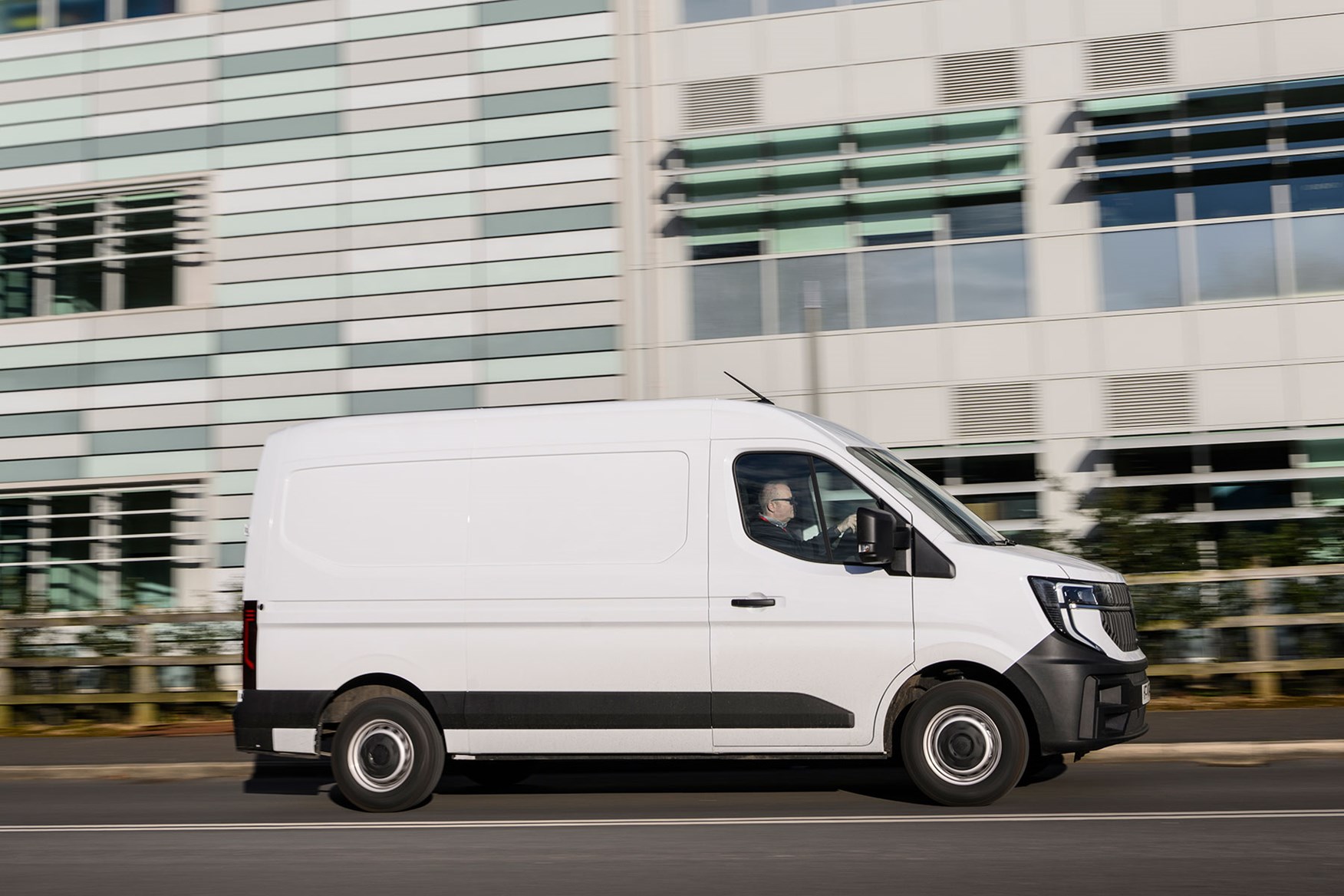
As a result, the pure-electric Renault Master E-Tech can have a smaller (and lighter) battery, while the diesel model only comes with an 80-litre fuel tank, rather than the 105-litre tank that was available on its predecessor. The better aero also means even the manual model can get very close to its official WLTP fuel economy figure of 37.2mpg. That competitive – especially when you compare it to the 33mpg you’ll get from the Crafter in the real world.
To further strengthen the Master’s case, every version of the van can carry more than 1,200kg and it’s priced incredibly competitively. In fact, when it was launched, it cost exactly the same as the van it replaced despite its many improvements – and now, the cheapest Master is more than £7,000 less expensive than the cheapest Transit.
What are the Renault Master’s rivals?
The Renault Master is the newest large van on sale. The Transit hasn’t had a significant update since 2019, the Crafter had a largely technological update in 2024, while the recently revised tranche of Stellantis large vans have been around in the same basic form since 2006, save for a few styling and infotainment revisions.
That means the Master is on the front foot, because it’s all new. New platform. New engines. New tech. And that puts it in a class of one. In fact, the last time a brand-new large van was launched on a fresh platform was back in 2019 with the Mercedes Sprinter.
Verdict: is the Renault Master any good?
Good doesn’t cut it. The Renault Master is utterly excellent, which is why we named it our Van of the Year for 2025. Yes, it doesn’t introduce any revolutionary features – but it stands out from the crowd for its excellent all-round ability and stunning value for money.
That value is so incredible, in fact, that you can buy a Master for the same price a medium panel van from the class below. So, it’s a great choice for those in need of loads of space on a tight budget. Plus, the Master manages to provide a similar range and comparable fuel economy to its large van rivals with a small fuel tank (or battery).
Finally, its interior quality stands up to the very best on the market, and it’s good to drive. There are few oddities in the cabin (such as manual handbrake lever on the electric model), but none are bad enough to knock it off its perch at the top of the class.
Skip to our full verdict on...
- It’s a proper doddle to drive – even in town
- Even the cheapest engine has plenty of torque
- Smooth and quiet, even at motorway speeds
The Renault Master is available with a choice of three diesel engines, all based on the same turbocharged 2.0-litre four-cylinder lump. You can choose from 130hp, 150hp or 170hp outputs, all of which are mated to a six-speed manual gearbox as standard. Other countries get a 110hp engine, but that didn’t make it to the UK.
This is largely because the 130hp model makes the best sense for most UK buyers. For starters, it has a healthy 350Nm of torque, which is just 10Nm less than you get from its more powerful stablemates. Plus, the 130hp’s torque arrives nice and low in the rev range – so we don’t think you’ll really appreciate the more powerful engines unless you’re planning a heavy conversion or need to tow plant machinery regularly.
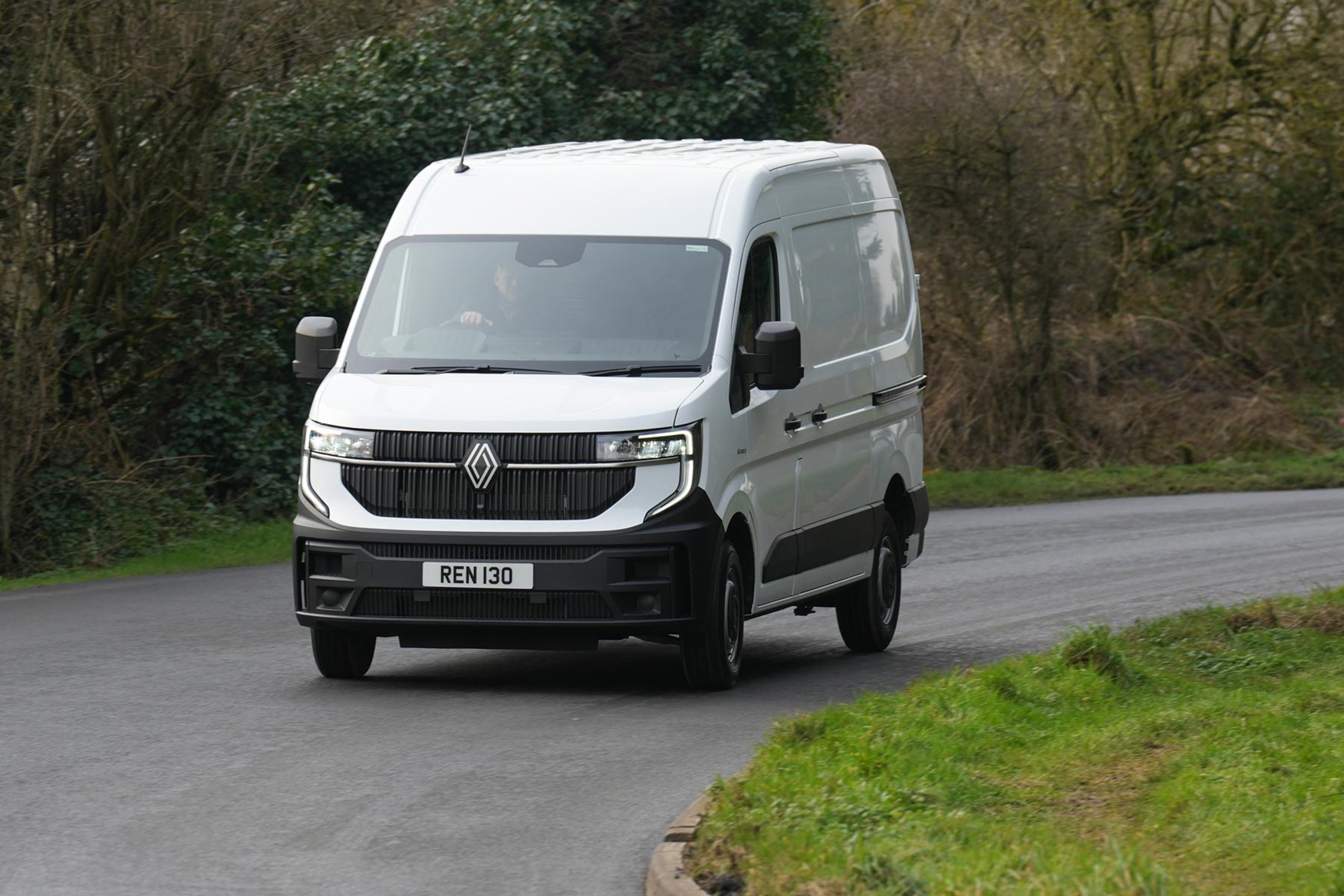
As such, Renault reckons the 130hp model will account for most Master sales. We haven’t yet had chance to sample the more powerful engines, but we’ll let you know how they perform once we have.
How does it drive?
It’s like a Tardis in reverse. It’s vast on the outside, but it feels like a medium van from behind the wheel. To achieve this, Renault had to get quite clever with packaging and engineering to fool your brain into misreading the Master’s dimensions.
The windows help with that a lot. They’re enormous and they give you a great view of your surroundings – and that makes the van far easier to place in its lane. The A-pillar isn’t too wide, either, so you don’t lose other vans from view at busy junctions.
We found an extra benefit for the side windows, too. With them rolled down, the aperture is big enough for you to stick your torso through and look backwards down the Master’s flank. That means you can easily gauge how close you are to bollards and low walls – great news if you’re a tradie who regularly needs to park on tight client driveways.
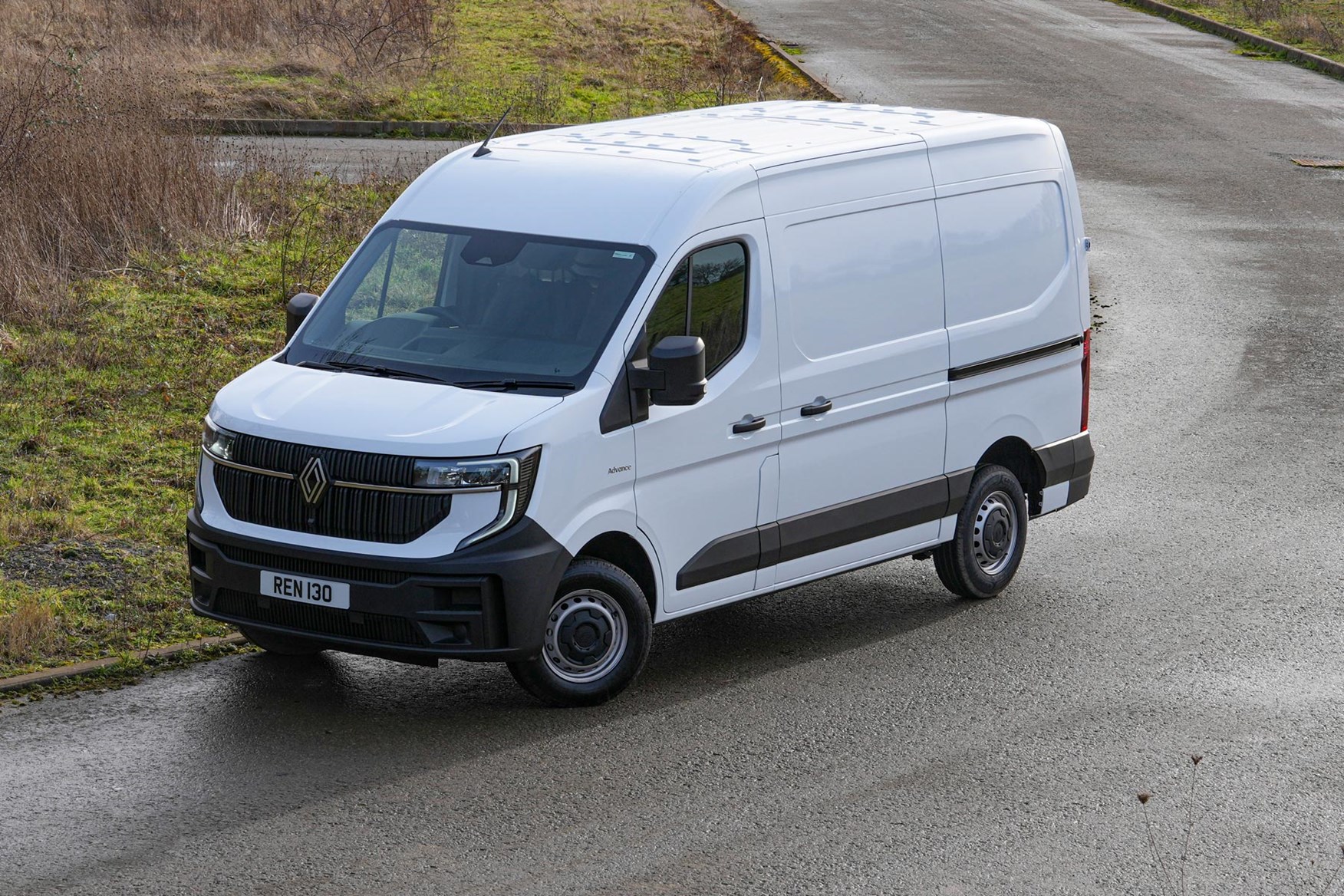
Renault has tuned the Master’s steering system well, too. It’s light enough to twirl around town all day, but the weight builds nicely as you pile on the speed. That means you have the confidence to fling it down a B-road if you desire – and it’s sure-footed enough to not wander around in its lane on the motorway. It isn’t a Transit, but it’s not half bad.
The sheer amount of lock you get is worth a mention, too. It’s like a London taxi – at maximum lock, the front wheels almost stick out of the body at a right angle. That means you can thread the Master through the tightest medieval towns in the UK safe in the knowledge you won’t rattle it down the side of a Grade I listed building.
The suspension is a little bouncy when you’ve nothing in the back, but it smooths out well once you’ve loaded it with stuff. More to the point, once you’ve rammed it to the gunnels, the Master doesn’t jog around on bumpy country roads which means you’ll lessen the risk of damaging anything you’re carrying.
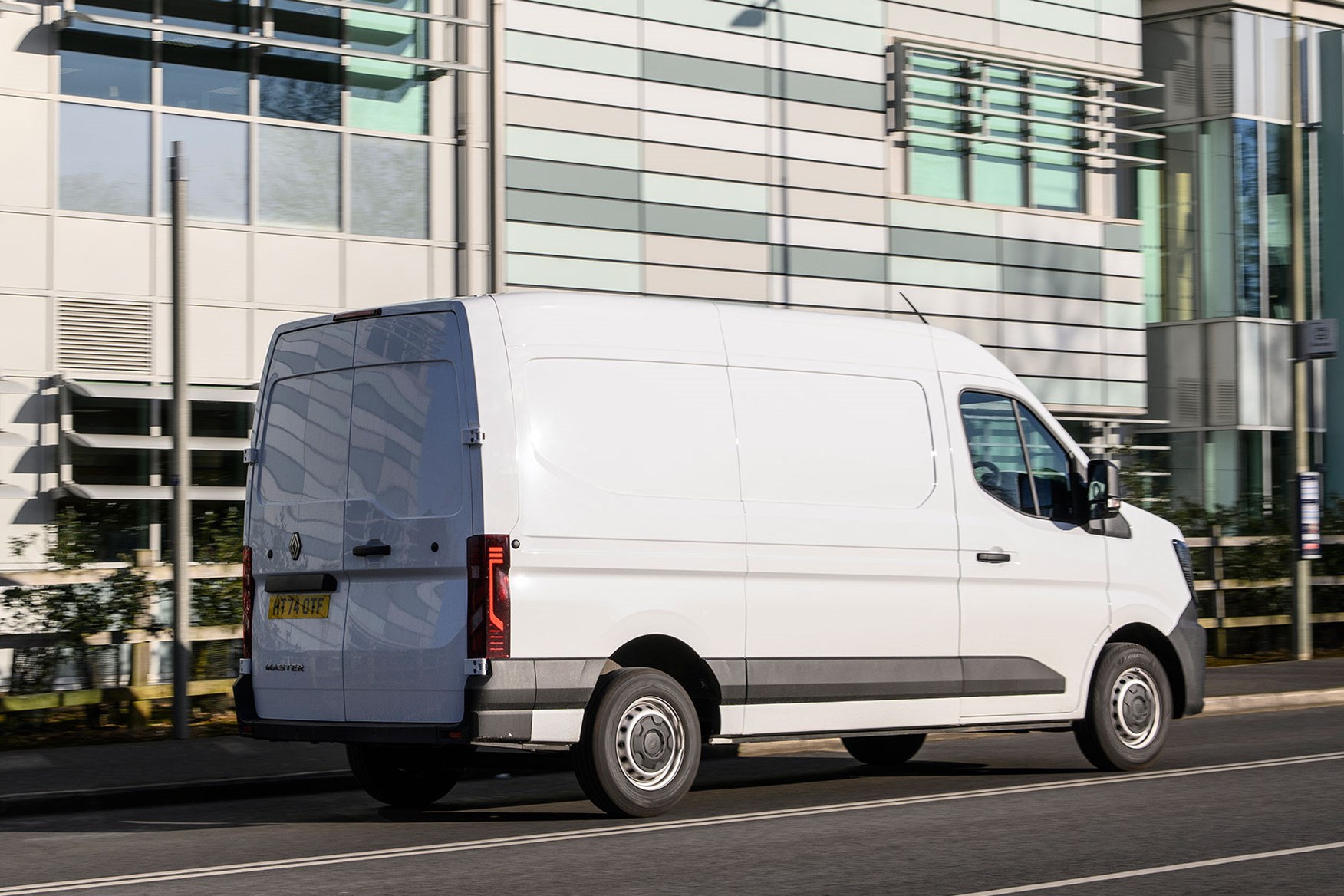
We’re not stuck on the Master’s brakes. They’re very, very grabby at the top of their travel. Even after a week of living with the van, we were still forgetting about their sharpness and frightened our passengers by locking them up. We reckon you’d get used to them, though.
Renault offers some tech to help make the Master easier to live with. Once such item is a rear-view camera mounted on a screen where the rear-view mirror would normally be. The side mirrors are more than adequate for the road, but the camera comes in handy when you need to park, especially as you only get rear parking sensors as standard.
- Dashboard pinches parts from Renault’s cars
- Modern infotainment screen, fresh switchgear
- Old school manual handbrake is a novelty
The Master’s cabin is excellent. Renault has obviously drawn inspiration from its passenger cars. The infotainment system is angled towards the driver to afford a better view for sat-nav instructions, and Renault pilfered the Clio’s excellent climate control dials, which just so happen to be perfectly sized to operate while wearing a pair of chunky gloves.
Every version of the Master gets a 10.1-inch touchscreen with wireless Apple CarPlay and Android Auto as standard. The screen has decent resolution and good response, although you will need to take your gloves off to jump between menu screens, as they’re integrated into the screen.
Mercifully, there are plenty of other physical buttons on the dashboard, including a hot key for the driver assistance tech above your right knee, a physical button to unlock the cargo bay and a dedicated stalk for volume and media behind the wheel.
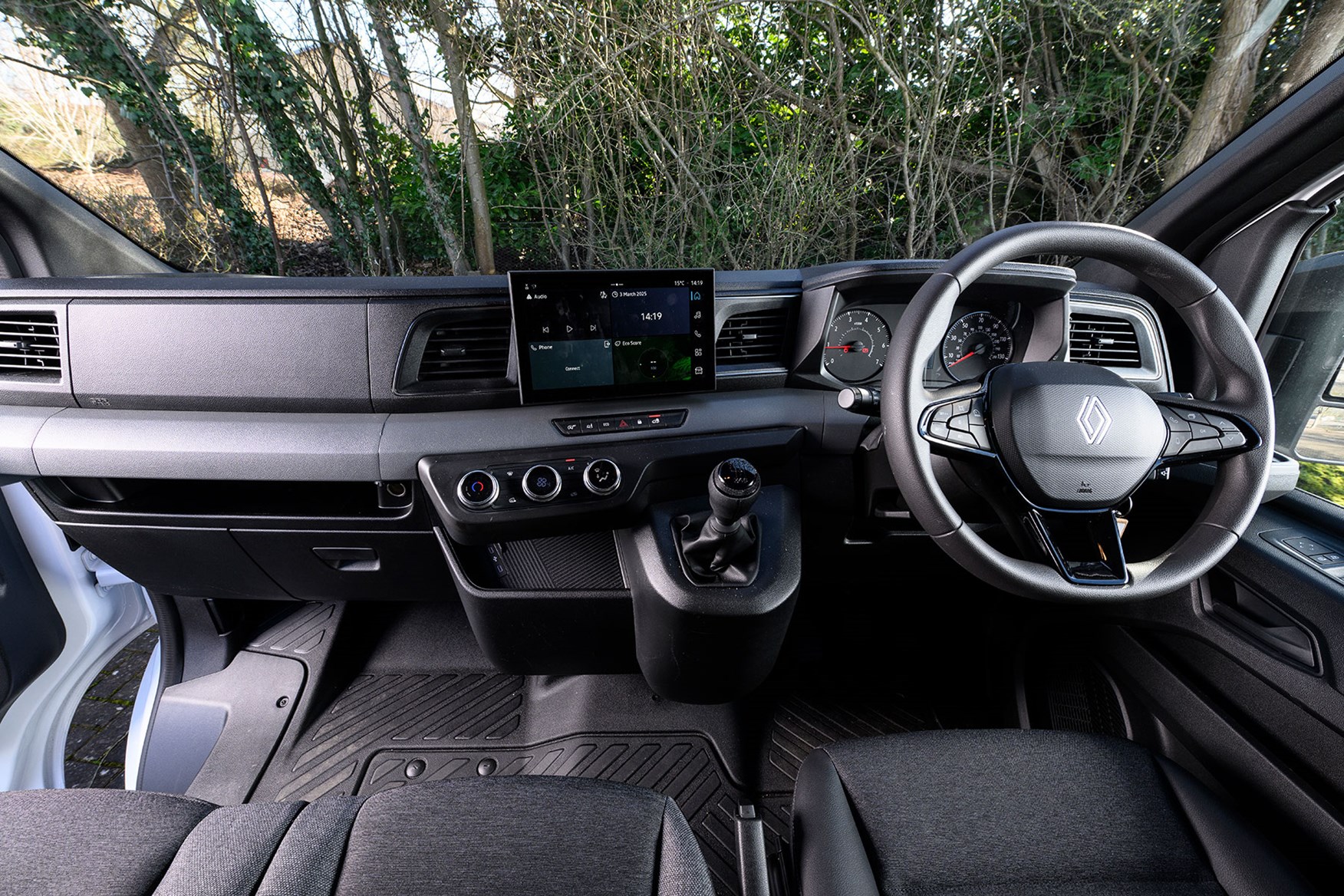
There’s even a little shelf for your phone under the infotainment system. Our Deputy Editor found it held his device in place very securely, even when he was tearing down some twisty country lanes. Our only gripe – and forgive us if this is too hedonistic – is that we wish it had a wireless charger on it. The space is just a little too small to snake a cable into without damaging your phone’s charging port.
The only upgrade for the more expensive Extra specification is additional Google integration with built-in voice control and navigation. Renault reckons that most big companies won’t necessarily want that level of kit, though, so it’s great that the most important stuff is all included on the basic model.
There are a couple of charming old school features that are at odds with what’s otherwise a thoroughly modern interior. For example, to start the Master, you need to stick the key in the ignition barrel and turn it – and, rather than push-button handbrake on the dashboard, you get a manual lever between the driver and passenger seats. The latter will be phased out on the electric and automatic versions of the van by the end of 2025.
Interior storage
We like the Master’s door storage. There are loads of bins to hold everything from small tools to your wallet and even large bottles of water. We also like the drinks holders on the outer edges of the dashboard, as they’re perfectly sized to hold a takeaway cup of tea.
The storage tray on the dashboard top is hit and miss. Because it doesn’t have a lid, you won’t be constantly fighting to close it once you’ve rammed it full of rolls of masking tape, offcuts of sandpaper, boxes of nails and the occasional sandwich wrapper.
We suppose that means you can’t break the lid, which is an advantage for repair costs. But the drawback is anything you chuck on top of the dashboard that isn’t black or grey will be reflected in the windscreen. That’s annoying, especially at night.
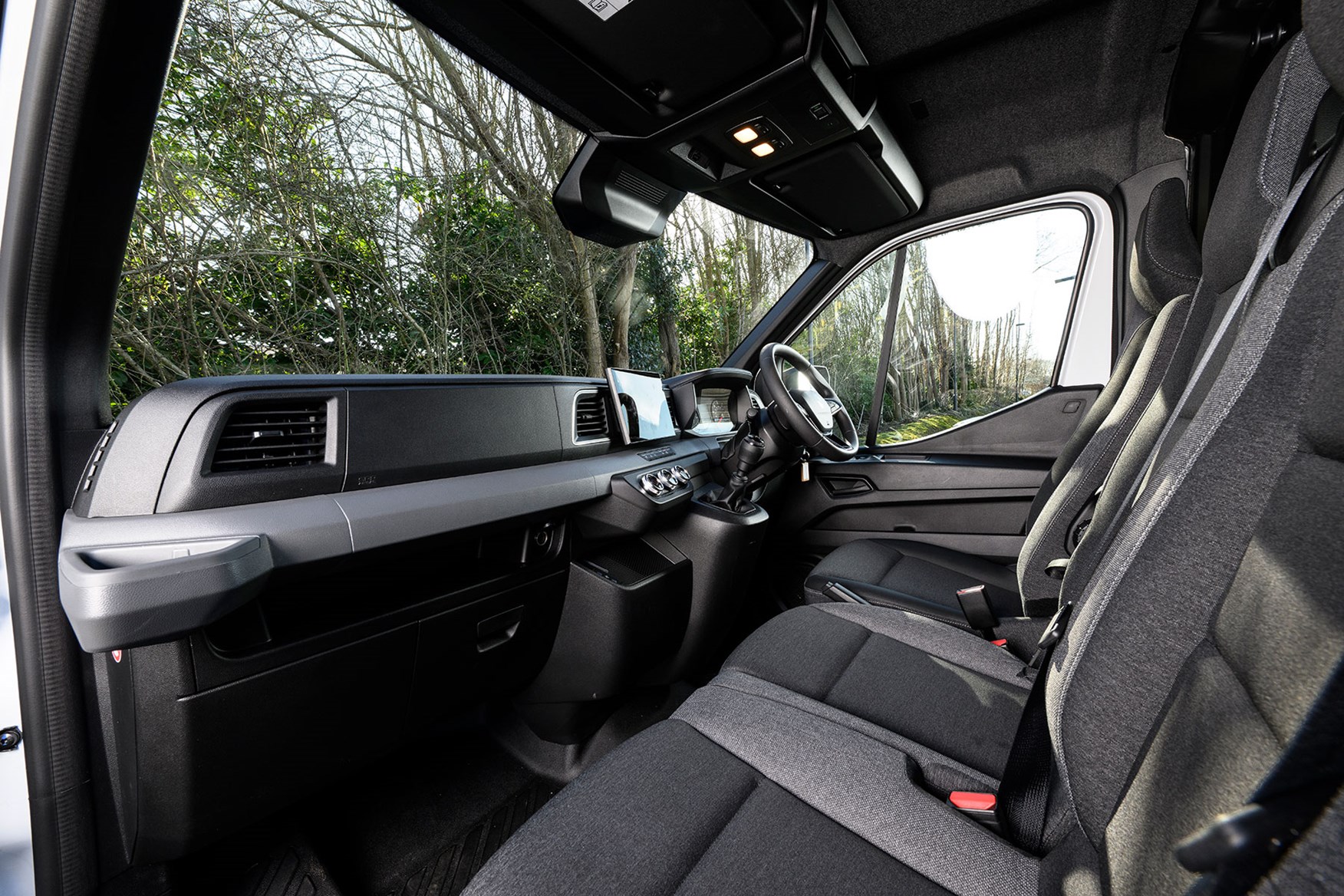
What’s more irritating, though, is that UK drivers miss out on clever storage features that continental Master drivers enjoy. For example. left-hand drive models get a brilliant sliding-drawer style glovebox that is both spacious and handily shaped.
But this disappears when the steering wheel flips to the other side of the vehicle, as the fuse box occupies a huge chuck of space behind the left-hand side of the dashboard – and Renault refuses to move it. This means that we only get a tiny, traditionally hinged glovebox that’s barely big enough to hold a pair of gloves. Come on Renault, move those fuses.
- Incredible value for money
- Small tank but good economy
- Long service intervals
The improvements Renault made to the latest Master would be irrelevant if it cost double that of its predecessor. Happily, that’s far from the case. Renault has kept the pricing pretty much the same as the previous model, which means it remains competitive in its class.
It’s far cheaper than the Ford Transit and Volkswagen Crafter. In fact, only the collection of Stellantis large vans can beat the Master on price – but they’ll only save you a couple of grand, which isn’t anywhere near enough for a set of vans that have been around since Noah was in short trousers.
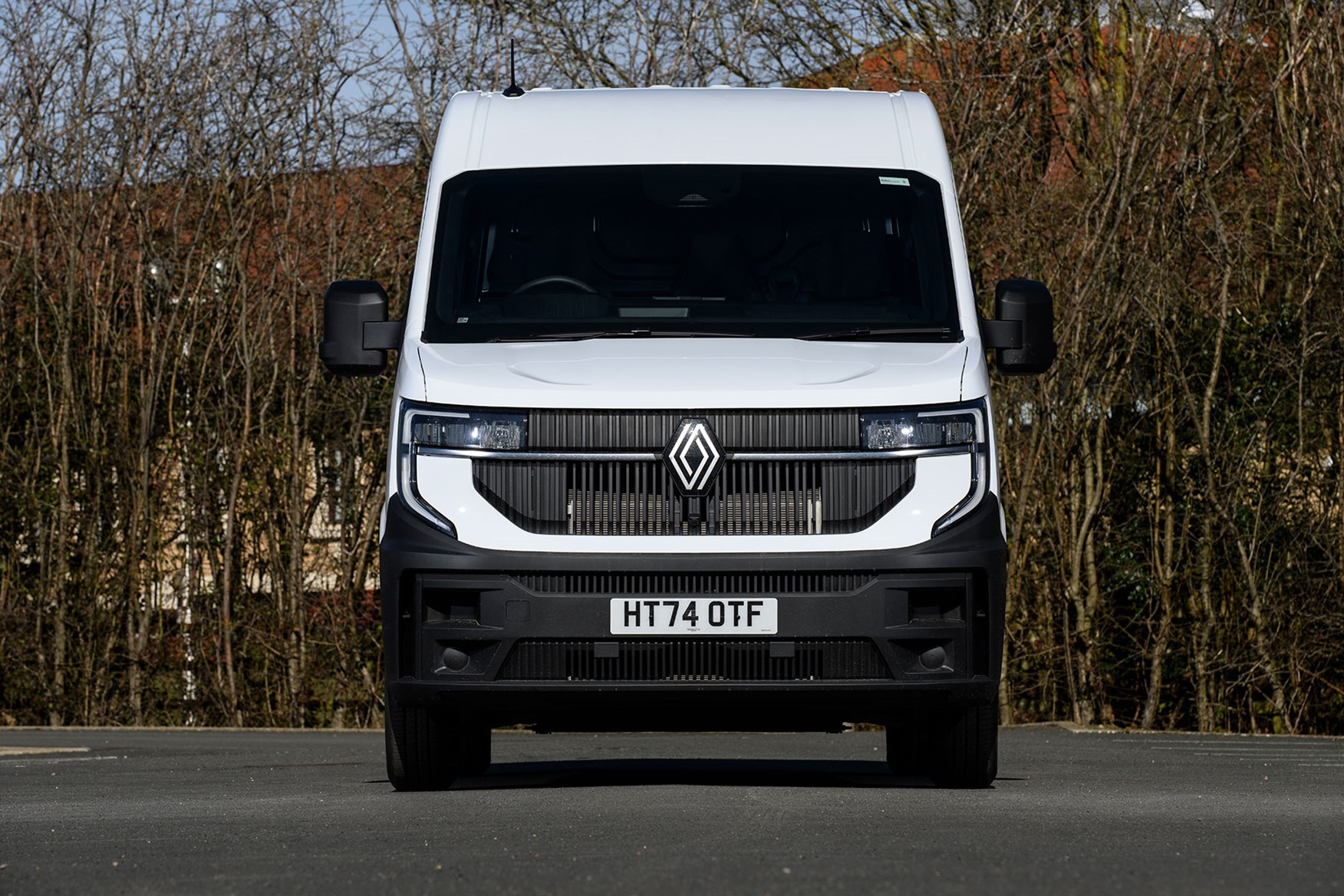
In fact, the Master is closer in pricing to the likes of the smaller Ford Transit Custom and, at the time of writing, none of the diesel models cost more than £40,000. By the time you’ve weighed up the Master’s excellent levels of standard equipment, you’ll probably halt your search and head to your local Renault dealer.
Renault Master mpg
The Renault Master’s fuel economy is decent, but it doesn’t set new standards for the class. Official claimed figures top out at just over 37mpg. However, we managed to get close to that figure during our time with the van, even with a full load on board.
Renault Master servicing
The Renault Master’s service intervals are handily far apart at 24 months or 24,000 miles.
Renault Master warranty
Renault’s warranty is one area that is a little disappointing on the Master. You get just three years or 100,000 miles. Rivals offer much longer cover, with Toyota leading the way with its 10-year package on the Proace Max (which is another aging Stellantis large van). To unlock that, though, you need to get the van serviced at a main Toyota dealer.
Renault Master standard equipment
There are only two different trim levels for the Renault Master. ‘Advance’ opens the range – and that’s a little confusing because it doesn’t advance on from anything. Above that sits the ‘Extra’ trim. We’ve picked out some highlight from both specifications below:
Renault Master Advance equipment highlights
- Automatic lights and wipers
- Heated and powered door mirrors
- Passenger bench seat with underseat storage
- Manual air conditioning
- Solid vertical bulkhead
- 10.1-inch touchscreen with wireless Apple CarPlay and Android Auto
- Loading bay lighting
Renault Master Extra equipment highlights
- Google built in, with voice control and navigation
- Front fog lights with cornering function
- LED lighting in the load bay
- 12V plug in cabin area and on D-pillar
This version of the Renault Master is all new, but the engines are ones that have featured in various vehicles over the years. The old Master was never much of a feature in the list of the most reliable vans, but its smaller and younger sibling the Renault Trafic was a regular in there, which will give hope and reassurance.
- All safety kit comes as standard
- Some features not offered on the diesel
Renault is targeting a high safety score for the Master, although it had yet to be assessed at the time we first drove it in the UK. The level of kit suggests it should do well though.
- Driver and passenger airbags with passenger ‘bag cancellation
- Speed limiter and cruise control
- Active emergency braking
- Driver attention and drowsiness warning
- Rear parking sensors
- Lane keep assist
- Alarm
The electric version gets a few more features that the diesel misses out on. That means you only get a blind spot warning and pedestrian and cyclist collision warning systems only on the E-Tech.
Which Renault Master is best for me?
Renault has kept the selection of models in the Master range nice and simple, with only two to choose from. Of these, the Advance makes the most sense, given that the additions on Extra are few and none are really crucial. That said, the jump between the two trims is not that big financially, so if you are tempted by some extra kit then it won’t cost you the earth.


























